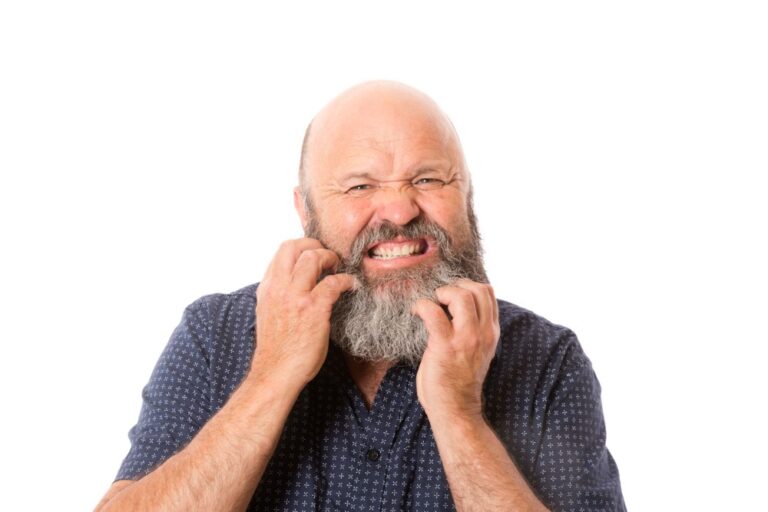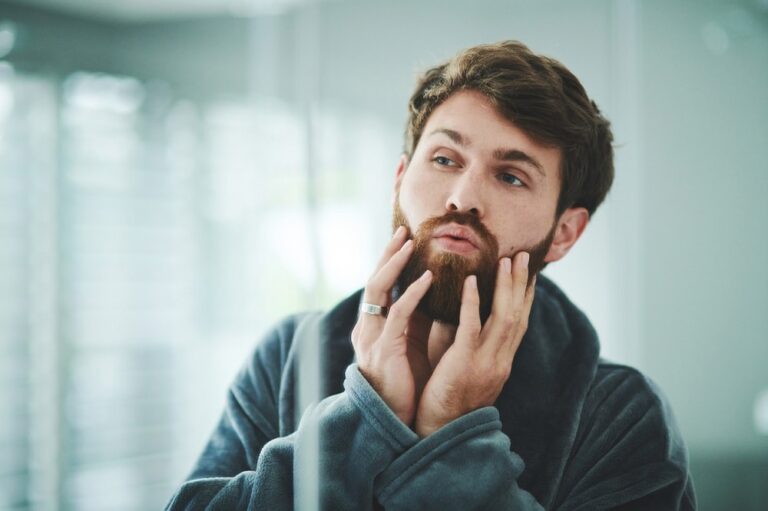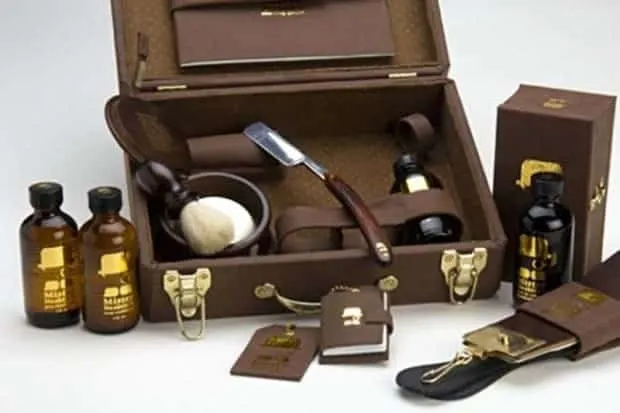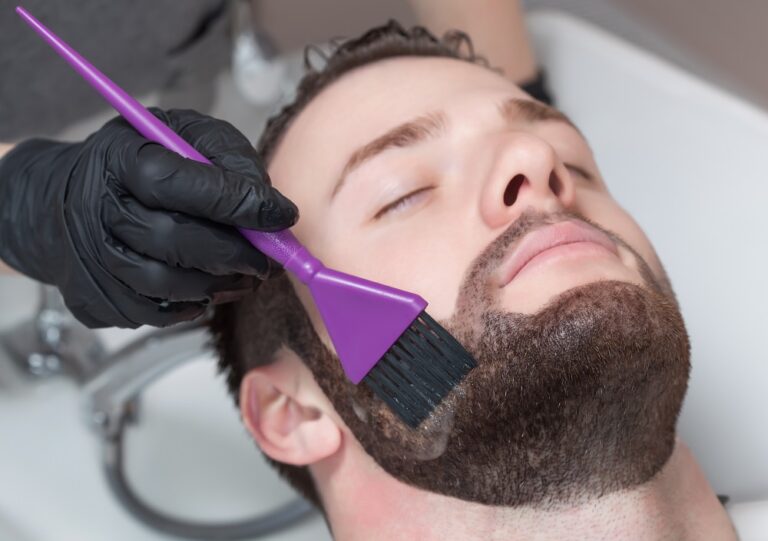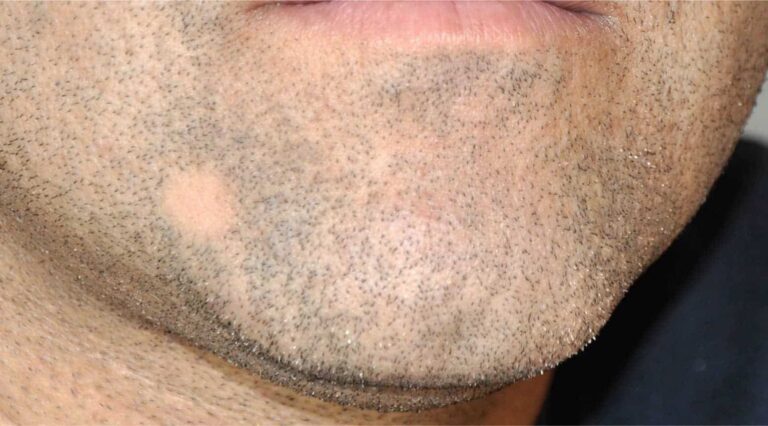Should You Exfoliate Before or After Shaving?
Exfoliation is a term frequently used in the world of personal care, but did you know that it can also apply to shaving your beard?
It’s not a topic that is often discussed, so understandably, you are looking for more information about whether you should exfoliate before or after shaving.
Should You Exfoliate Before or After Shaving?
You should exfoliate before shaving. By doing so, you will eliminate any oil, dirt, and dead skin cells that have accumulated on your skin and within your pores.
When your pores are clogged with oil, dirt, and dead skin cells, they can impede your razor’s ability to shave as close to the skin as it would if the pores were clean and free from debris.
Moreover, removing the oil, dirt, and dead skin cells before shaving will make your skin soft and smooth even before you begin to shave, resulting in an even smoother outcome after you have shaved.
In addition to the appearance benefits, exfoliating before shaving will help you have a less painful shave. Pores clogged with dirt, oil, and dead skin can lead to a more painful shave, which is likely to cause razor burn or other skin irritation.
When the pores are clogged, the razor will pull on the hair follicle more forcefully than it would if the skin had been exfoliated. Gentle exfoliation opens up the pores, allowing the razor to get closer to the hair’s root, making it easier to shave.
How to Exfoliate Before Shaving
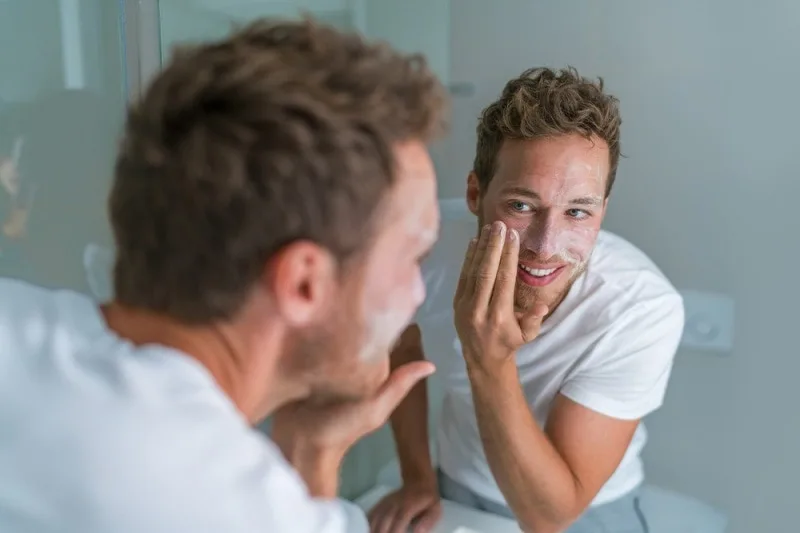
You must use the right exfoliant on your face when exfoliating before shaving. Some exfoliants are harmful to your face and can cause skin irritation like breakouts or redness due to their abrasiveness.
One of the best facial exfoliants you can use before your shaving routine is the Viking Revolution Microdermabrasion Face Scrub for Men. It is made of 100% natural ingredients that will safely and effectively exfoliate your face for a clean shave.
To begin, rinse your face with warm water to open your pores. Warm water helps open your pores, making it easier for the exfoliant scrub to remove the dirt and oil from your pores.
Once your face has been rinsed with warm water, take a small amount of the face exfoliating scrub onto your fingers and work into your face. Work the areas of your face with the exfoliant by making small circles with your fingers.
You can also use a sponge or cloth to work in the exfoliant. Just make sure the material isn’t too harsh to be used on the face. Exfoliate all the areas of the face that you will be shaving to get a smoother shave and the best result possible.
After exfoliating, you will need to rinse the scrub from your face and then pat your face dry using a clean rag or towel. It’s best to use cold water to rinse your face, as this will cause your pores to close quickly. This is important because it will keep any dirt from becoming trapped in your pores between the time that you exfoliate and the time that you shave.
Don’t Forget the Neck!

Shaving your face also means shaving your neck, so you mustn’t forget to exfoliate your neck before shaving. Scrub the same exfoliant you used on your face onto your neck to exfoliate all the neck areas that you will be shaving.
When exfoliating your neck, don’t scrub too hard, as this can irritate the sensitive skin on your neck and cause redness. Instead, gently scrub your neck just hard enough to remove any built-up dirt, oil, and dead skin that has accumulated within the pores.
Do Not Exfoliate After Shaving
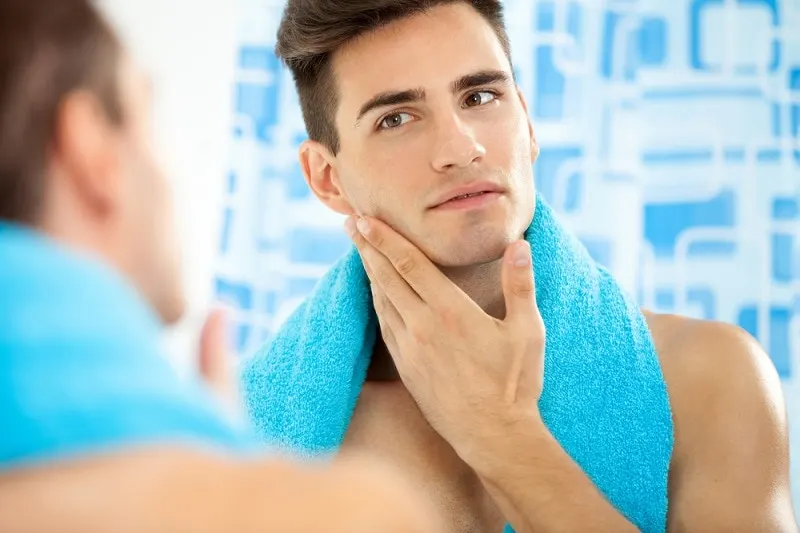
This point can’t be stressed enough: don’t exfoliate after you have shaved.
When you shave, your skin goes through a slight trauma that causes it to be sensitive and more susceptible to irritants. Therefore, if you use an abrasive exfoliant on freshly-shaved skin, your skin will likely turn red and become itchy or burn. What’s more, there is no proven benefit of exfoliating after shaving.
It’s always possible that you can cut yourself during shaving. Using an exfoliant after shaving will cause pain in the area that has been cut, triggering additional burning and redness and other skin irritation.
Instead of exfoliating after shaving, you should moisturize. After shaving, you should rinse your face of the shaving gel you used and make sure the area is dry. You should do this with cold water and a clean cloth. Then, you can apply your moisturizer.
Applying a moisturizer after shaving will keep your skin hydrated, protected, and smooth. It will also extend the length of time between your shaves.
You can use a moisturizing lotion or oil. The best moisturizer will contain hyaluronic acid, a sugar molecule that binds water and collagen to plump your skin to reduce wrinkles and redness.
Other ingredients you should look for in a moisturizer you use for skincare include avocado oil, vitamin A, and peptides. These ingredients will all work together to reduce redness and protect your pores from oil and dirt buildup.
Frequently Asked Questions
What happens if I don’t exfoliate my face before I shave?
If you don’t exfoliate your face before shaving, you will be shaving an area with clogged pores. If you have clogged pores, it is less easy for your razor to cut the hair follicle at the root.
This can cause your razor to grab the hair follicle and pull it rather than make a gentle cut. When this happens, you will likely be left with red bumps and skin irritation. It can also cause ingrown hair.
Do I have to exfoliate before I shave?
While it’s not a requirement that you should exfoliate before you shave, it is recommended. Exfoliating before you shave will clean and open your pores to get a closer and more effective shave.


